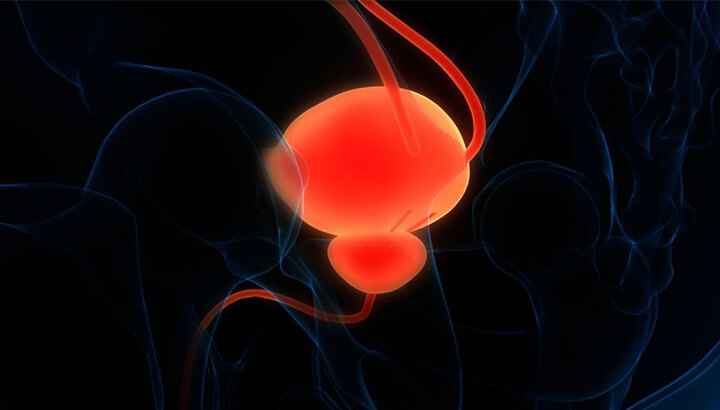
The bladder is a hollow, muscular, pear-shaped organ situated in the pelvic cavity. It acts as a temporary reservoir for urine storage.
Bladder cancer usually begins when the cells lining the bladder begin to grow abnormally. According to GLOBOCAN data, bladder cancer accounts for 3% of global cancer diagnoses. Globally, it is the 10th most common cancer and the incidence is increasing consistently, especially in developing countries.
Blood in the urine is the most common symptom of bladder cancer. But, sometimes the blood may come and go, or it may turn the urine into dark brown colour, which makes it difficult to notice this symptom.
Few other bladder cancer symptoms during the initial stage might include:
In the advanced stage, bladder cancer may cause the following symptoms:
In cases, when bladder cancer has metastasized to bone, liver or lungs, symptoms related to specific organs are also noticed.
The exact cause of bladder cancer is still unknown. However, researchers believe that bladder cancer occurs when there is a sudden change in the DNA of the bladder cells. These changes may either turn on the oncogenes or turn off the tumour suppressor genes, which can result in an uncontrollable growth and division of the cells. These changes are influenced by several factors, and include:
The patient’s medical history and family history are reviewed. In women, a pelvic or digital rectal examination is done by inserting a gloved and lubricated finger in the rectum to feel the tumour in the bladder.
A urinalysis may help to check if there are any traces of blood. Additionally, urine cytology is done to check for any abnormal cells that may be shed from the bladder lining. The following are some tests done to detect the stage and any abnormalities in the surrounding organs:
The cancer staging is important to determine the severity of cancer, its size and extent, and to devise an appropriate treatment plan.
Bladder cancer can have the following stages:
Bladder Cancer Treatment: Once the bladder cancer is diagnosed, you and your treatment team will discuss the treatment options, its benefits, possible risks and side effects. The treatment for bladder cancer is based on the stage of cancer during the time of diagnosis. Treatment modalities for bladder cancer include:
Bladder Cancer Surgery: Surgery is an appropriate treatment option for all stages of bladder cancer. Depending upon the patient’s age, stage of cancer, and side effects of the surgery, any of the following types of surgery may be recommended:
TURBT is a common early-stage, non-invasive treatment option to remove bladder cancers confined to the inner layers of the bladder. It is performed under general anaesthesia. Once the anaesthesia sets in, a small wire loop is passed through a cystoscope (thin tube fitted with a camera) into the bladder. Through this wire loop, an electric current is passed to burn and destroy the cancer cells.
This procedure involves the removal of all or a part of the bladder. It is of two types: Radical and partial.
It is a surgical procedure that reroutes the normal urine flow. This procedure is done when the urine flow is blocked due to the formation of tumours.
Chemotherapy: It is a treatment option that involves the use of specific drugs to kill or stop the growth of cancer cells. These drugs interfere with the process of cell division and promote cancer cell death. Chemotherapy is recommended either before the surgery to shrink a tumour (neoadjuvant therapy) or after the surgery/ radiation therapy to kill the remaining cancer cells (adjuvant therapy).
Chemotherapy for bladder cancer can be given in 2 different ways:
Radiation therapy: It involves the use of high energy radiation beams to shrink and destroy the tumour. It can be given alone or in combination with chemotherapy or surgery.
Radiation therapy is a localised treatment option that can be given in two ways i.e. externally through an external source or internally by placing radioactive pellets near the tumour. External radiation therapy is mostly preferred for bladder cancers.
Immunotherapy: It involves the use of substances derived from living organisms, which can fight against cancer. Immunotherapy works by either recognizing or attacking cancer cells or by boosting the natural defence mechanism of the immune system. Immunotherapy is rarely recommended for bladder cancer.
There is no specific way to prevent bladder cancer. However, certain measures can help you lower the risk of bladder cancer. These include:
The prognosis depends on the stage of cancer at the time of diagnosis. The relative 5-year survival rate for localized bladder cancer is 70%, regional bladder cancer is 36%, and distant bladder cancer is 5% respectively.